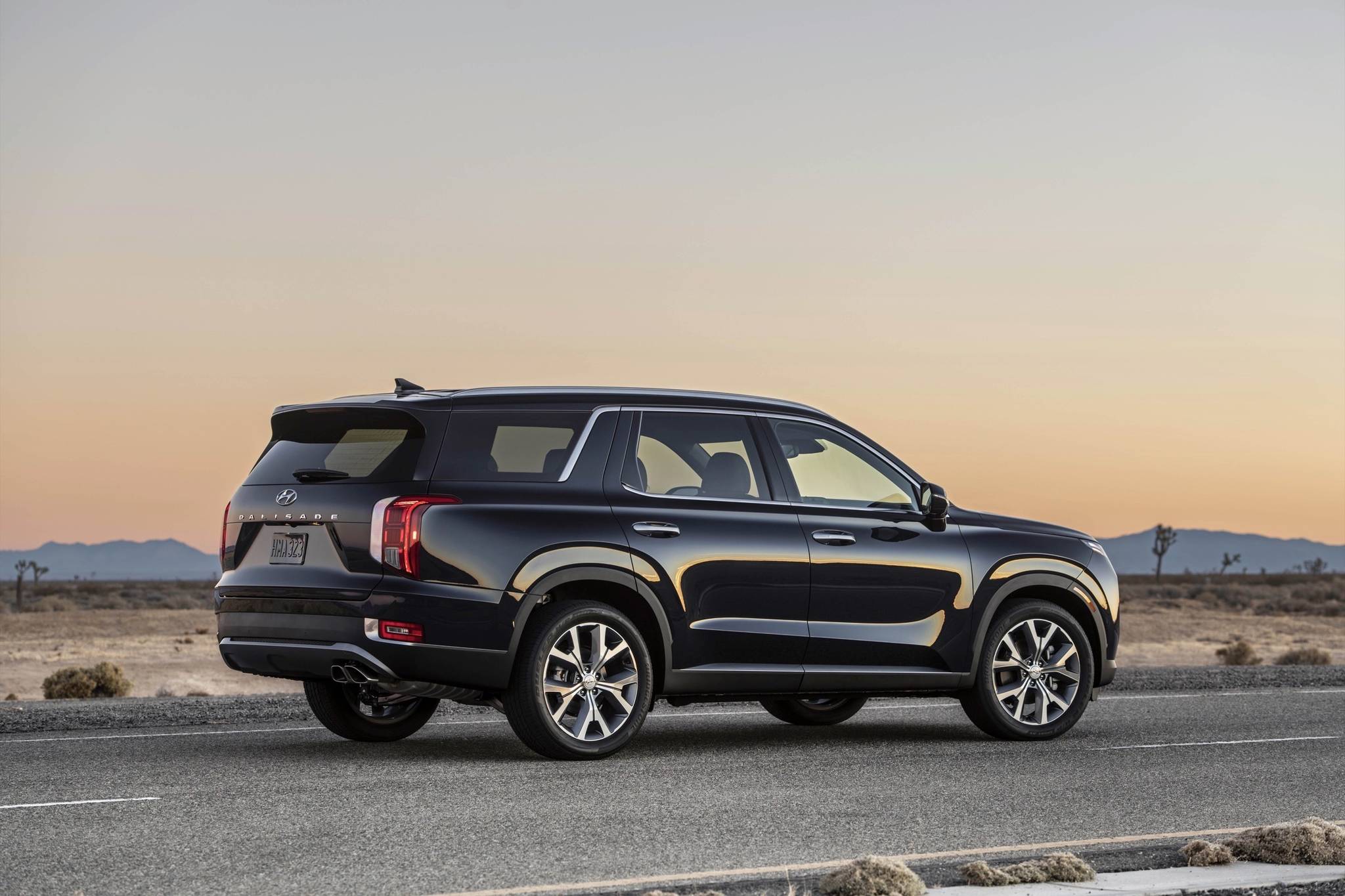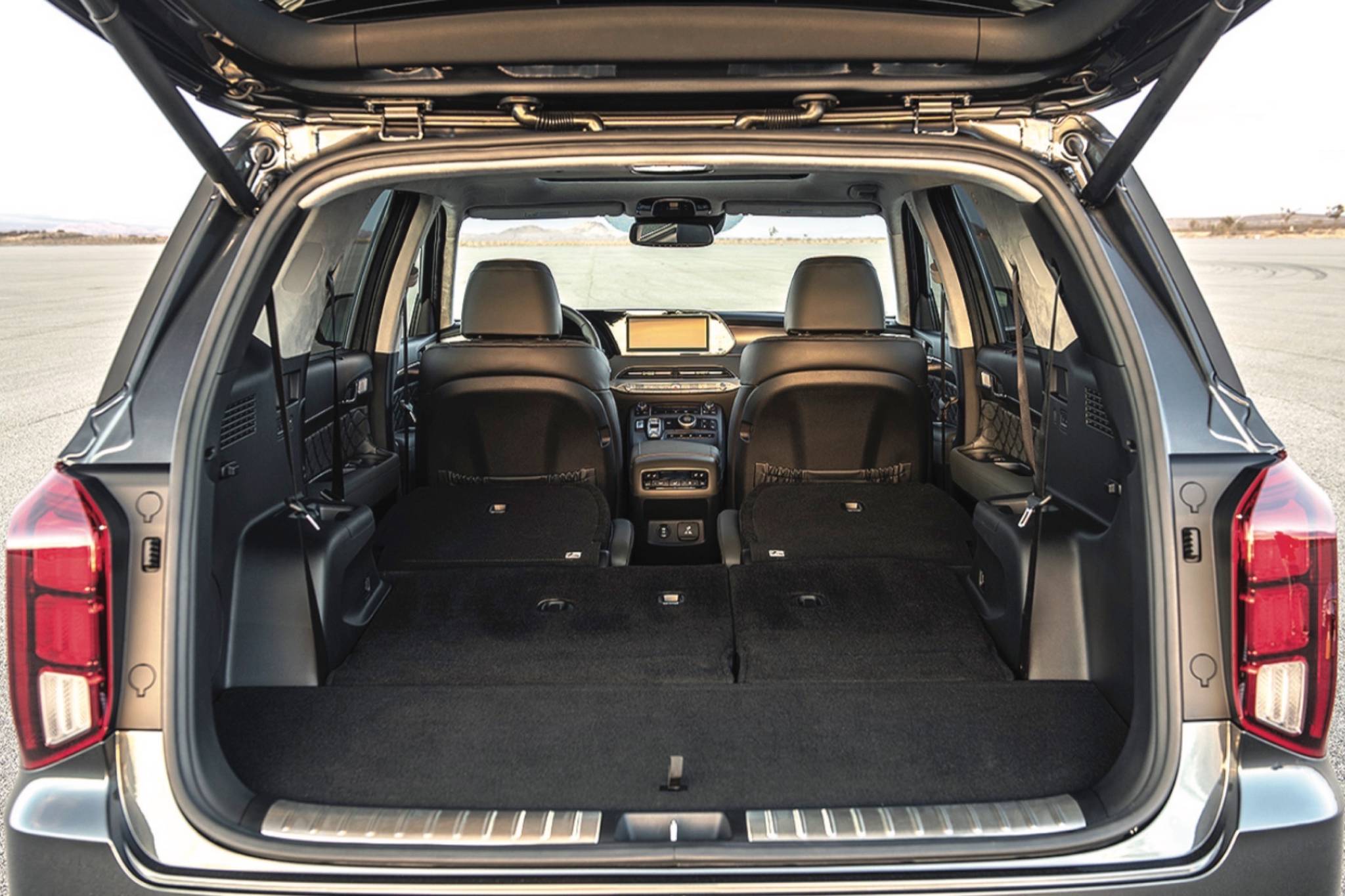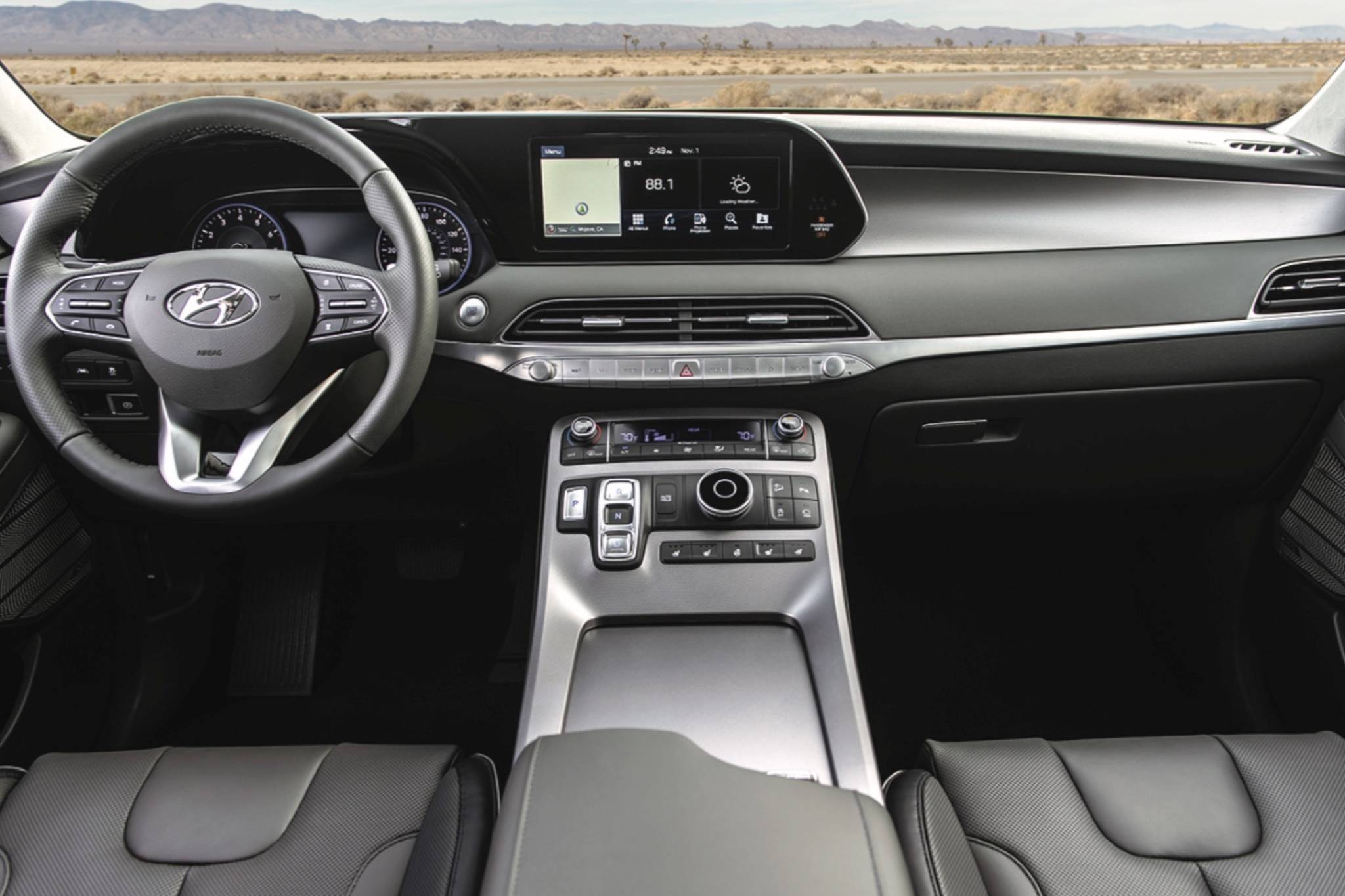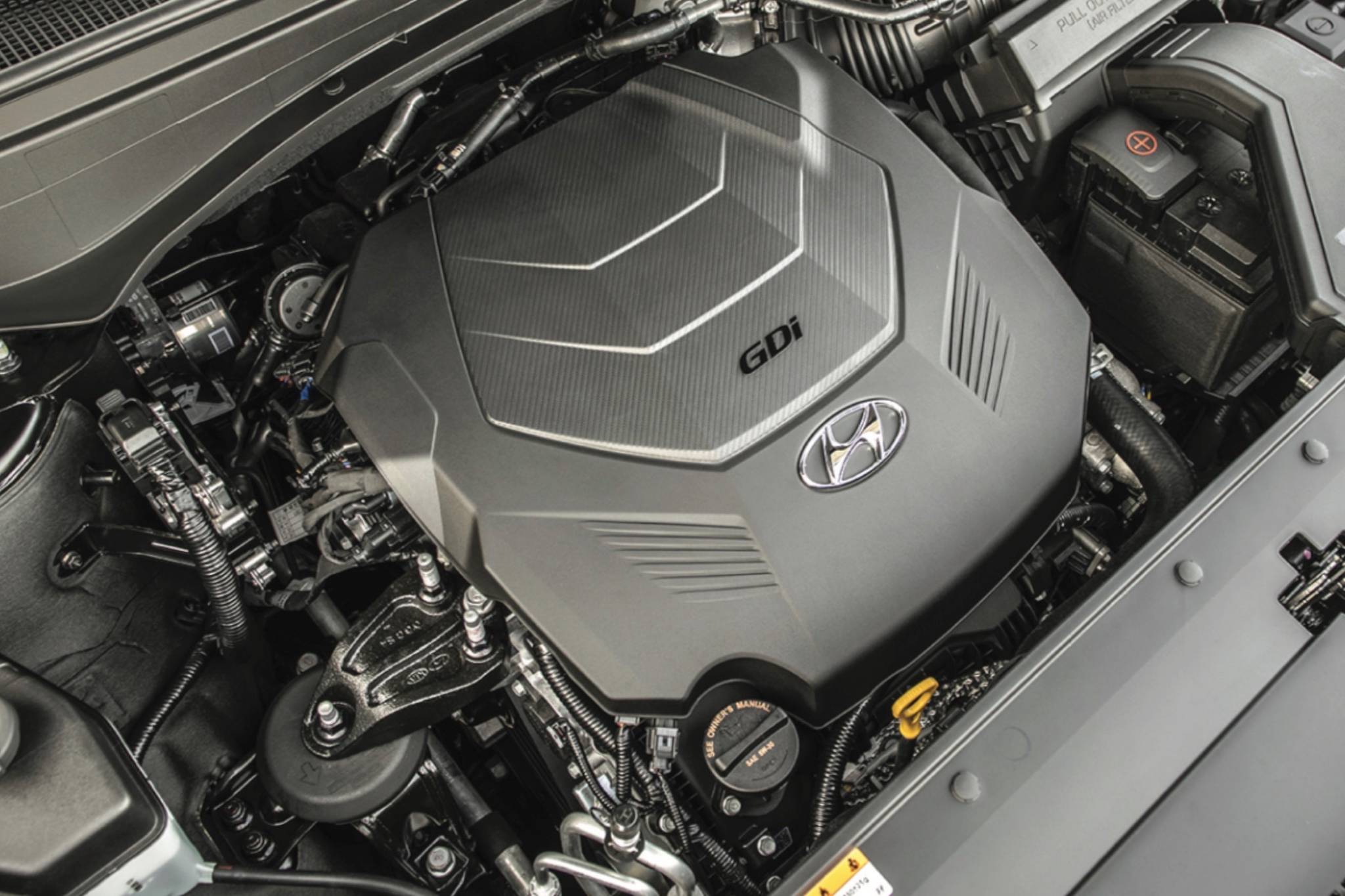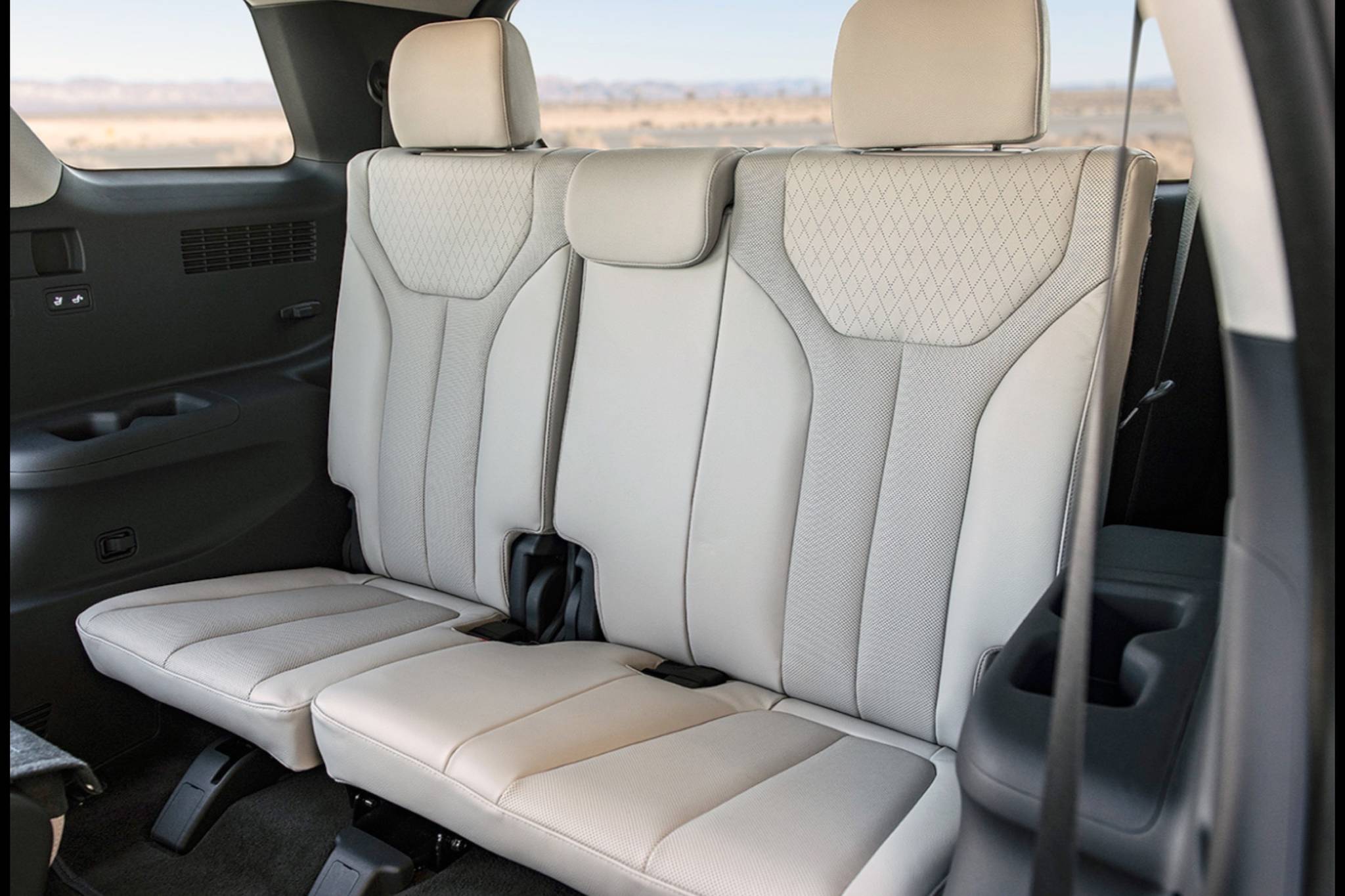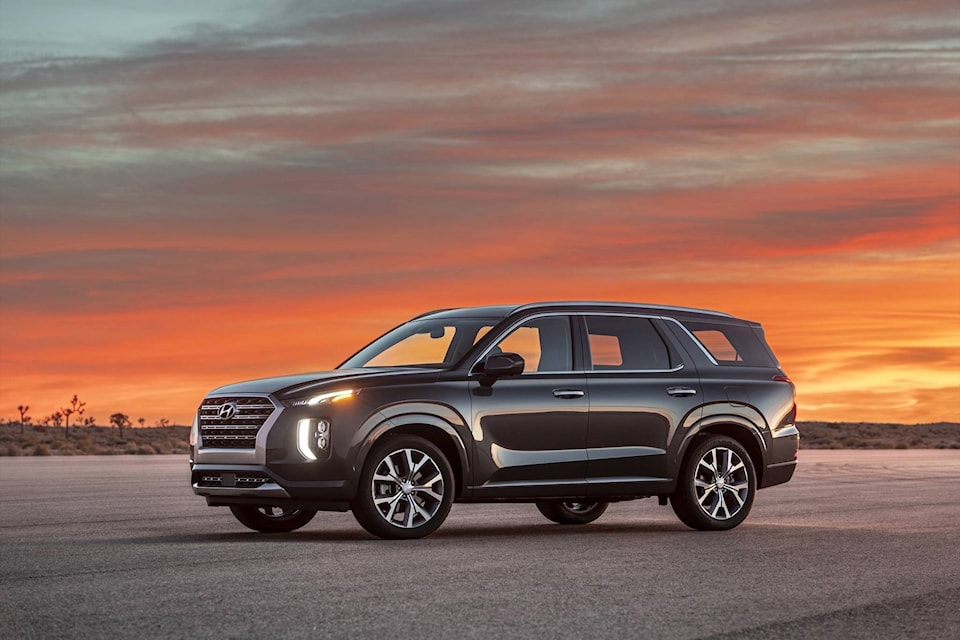The eight-passenger Palisade, arriving this summer, is Hyundai’s biggest and boldest utility vehicle since the Veracruz tall wagon was cancelled in 2012.
The Palisade is also a solid replacement for the seven-passenger Santa Fe XL that was essentially a carry-over for 2019.
Compared to the XL, the Palisade has 10 more centimetres between the front and rear wheels. It’s built on a new platform that’s shared with Kia’s new range-topping Telluride utility vehicle. The Palisade will be built in Korea.
Overall length has increased by more than 7.5 centimetres and the body is taller by roughly six centimetres. Those numbers position the Palisade mid-pack with the competition, but at or near the top for passenger volume, which is especially good news for adults occupying the third-row seat.
The cabin also stands apart from the crowd. The 20-centimetre touchscreen is positioned adjacent to the gauges (a 26-centimetre screen is optional), while the wide floor console mounts the transmission’s pushbuttons and stores assorted valuables. A grand total of 16 cup holders is particularly good news for beverage lovers wherever they’re seated.
Unlike other Hyundai models, the Palisade has an imposing grille that’s wrapped with a wide band of bling. The rounded fenders and bumper edges contain projector beam headlamps and available LED running lights. The taillights tie into the rear fenders in similar fashion. Hyundai’s design team definitely avoided anonymity in sculpting this big machine.
Despite the Palisade’s aggressive exterior, Hyundai installed a rather standard engine. The 3.8-litre V-6 puts out 291 horsepower and 262 pound-feet of torque, which is actually ahead of most of the competition. The Palisade can tow up to 2,270 kilograms. The sole transmission is an eight-speed automatic.
It’s still too early for fuel-economy figures, but based on the same engine installed in the similarly sized Kia Telluride, you can expect about 12.5 l/100 km in the city and 9.6 on the highway for all-wheel-drive versions (front-wheel-drive is standard for the base model).
The AWD system has settings for Normal, Sport (sends more torque to the rear wheels), Snow (varies torque between the left and right wheels for increased traction), and Smart (eco). The locking differential increases traction at lower speeds in slippery conditions.
As of this writing, Palisade trim designations for Canada, their exact content and pricing are not available, but the typical base-model starting point for competing utility vehicles is in the low-$40,000 range, including destination fees (add about $2,000 more for AWD).
Palisade buyers will get an assortment of active-safety technology plus Safe Exit Assist. It warns the driver if a vehicle approaches from behind, and will actually prevent the rear doors from opening, thus keeping children out of harm’s way.
The options list will include a panoramic sunroof, navigation system, head-up information display, 12-speaker Infinity-brand audio, and 20-inch wheels (18-inchers are standard).
Also optional is an intercom system that allows those in back to communicate with the first-class riders in the front row. An interesting extra is Rear Occupant Alert. Its sensors can detect any movement inside the Palisade after the car has been locked from the outside, which causes the horn to honk and issues an alert to the driver’s smart phone. You’ll never accidentally leave the kids behind.
Top trims will make available a set of second-row high-back bucket seats — just like in a private jet — in place of the split-folding bench seat.
The Palisade will undoubtedly agree with a growing legion of big-and-tall-wagon buyers wanting plenty of room for themselves and the gang, and enough comfort and performance to make the journey a relatively effortless experience.
What you should know: 2020 Hyundai Palisade
Type: Four-door, front- /all-wheel-drive utility vehicle
Engine (h.p.); 3.8-litre DOHC V-6 (291)
Transmission; Eight-speed automatic
Market position: Hyundai is late to join the full-size utility-vehicle party, but the Palisade comes with all the necessary ingredients to compete and succeed against the more established players.
Points: Eye-grabbing design will most definitely grab attention. • Plenty of space for all aboard. • Non-turbocharged V-6 is almost surprising, but has enough thrust. • Rear Occupancy Alert safety system — standard for Palisade — should be mandatory on all four-door vehicles.
Active safety: Blind-spot warning with cross-traffic backup alert (std.); active cruise control (std.); driver-attention warning (std.); lane-departure warning (std.)
L/100 km (city/hwy) 12.5/9.6 (est.); Base price (incl. destination) $37,000 (est.)
BY COMPARISON
Honda Pilot
Base price: $43,000
Well-regarded utility vehicle has a smooth V-6 and an effective AWD system.
Mazda CX-9
Base price: $38,400
Shapely styling and a comfortable interior. Peppy turbo four-cylinder.
Chevrolet Traverse
Base price: $37,400
Biggest of the bunch is spacious in all three rows. Base 310-horse V-6 hustles.
-written by Malcom Gunn, Managing Partner at Wheelbase Media
Like us on and follow us on
